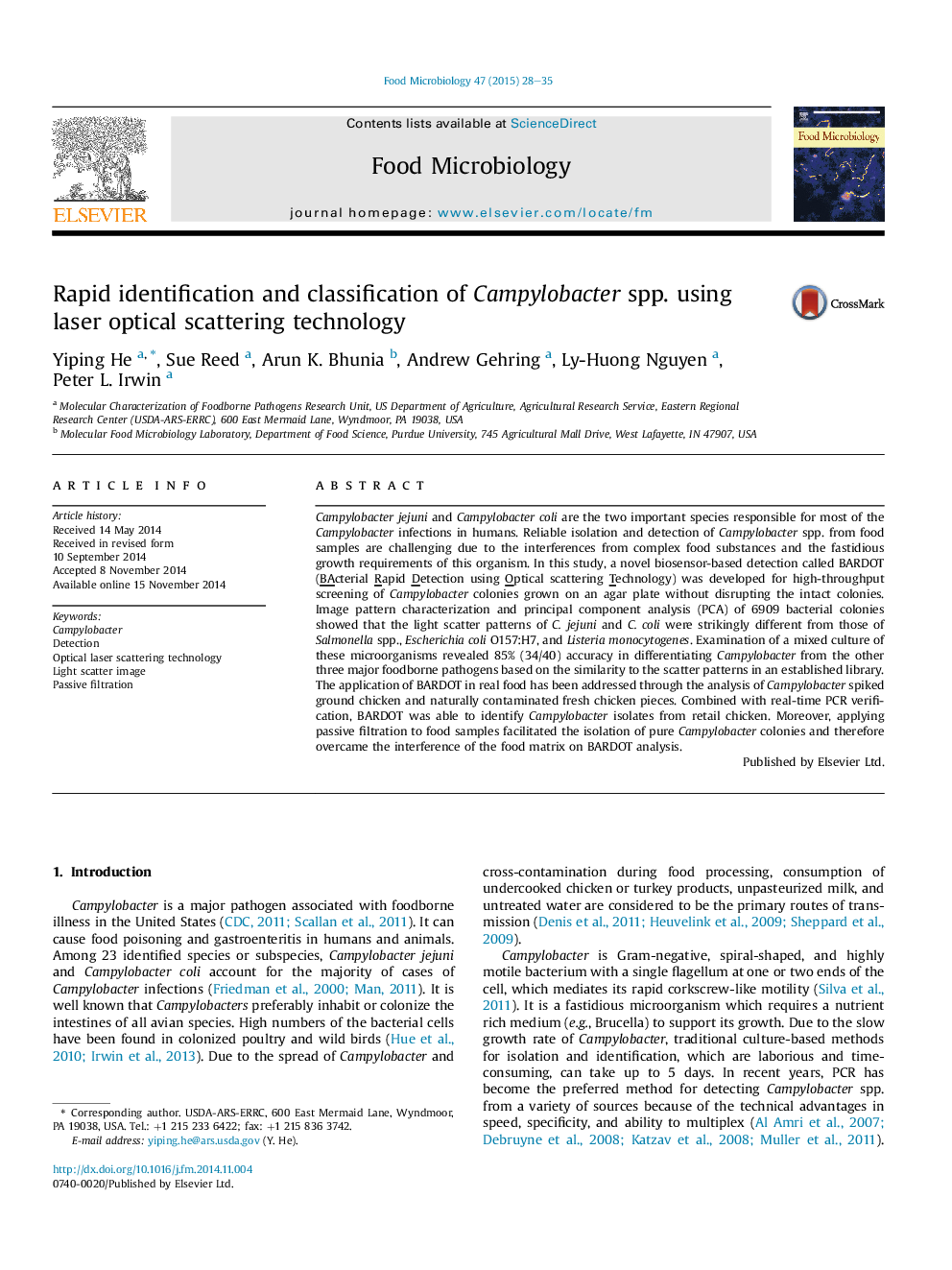| Article ID | Journal | Published Year | Pages | File Type |
|---|---|---|---|---|
| 4362847 | Food Microbiology | 2015 | 8 Pages |
Abstract
Campylobacter jejuni and Campylobacter coli are the two important species responsible for most of the Campylobacter infections in humans. Reliable isolation and detection of Campylobacter spp. from food samples are challenging due to the interferences from complex food substances and the fastidious growth requirements of this organism. In this study, a novel biosensor-based detection called BARDOT (BActerial Rapid Detection using Optical scattering Technology) was developed for high-throughput screening of Campylobacter colonies grown on an agar plate without disrupting the intact colonies. Image pattern characterization and principal component analysis (PCA) of 6909 bacterial colonies showed that the light scatter patterns of C. jejuni and C. coli were strikingly different from those of Salmonella spp., Escherichia coli O157:H7, and Listeria monocytogenes. Examination of a mixed culture of these microorganisms revealed 85% (34/40) accuracy in differentiating Campylobacter from the other three major foodborne pathogens based on the similarity to the scatter patterns in an established library. The application of BARDOT in real food has been addressed through the analysis of Campylobacter spiked ground chicken and naturally contaminated fresh chicken pieces. Combined with real-time PCR verification, BARDOT was able to identify Campylobacter isolates from retail chicken. Moreover, applying passive filtration to food samples facilitated the isolation of pure Campylobacter colonies and therefore overcame the interference of the food matrix on BARDOT analysis.
Keywords
Related Topics
Life Sciences
Agricultural and Biological Sciences
Food Science
Authors
Yiping He, Sue Reed, Arun K. Bhunia, Andrew Gehring, Ly-Huong Nguyen, Peter L. Irwin,
